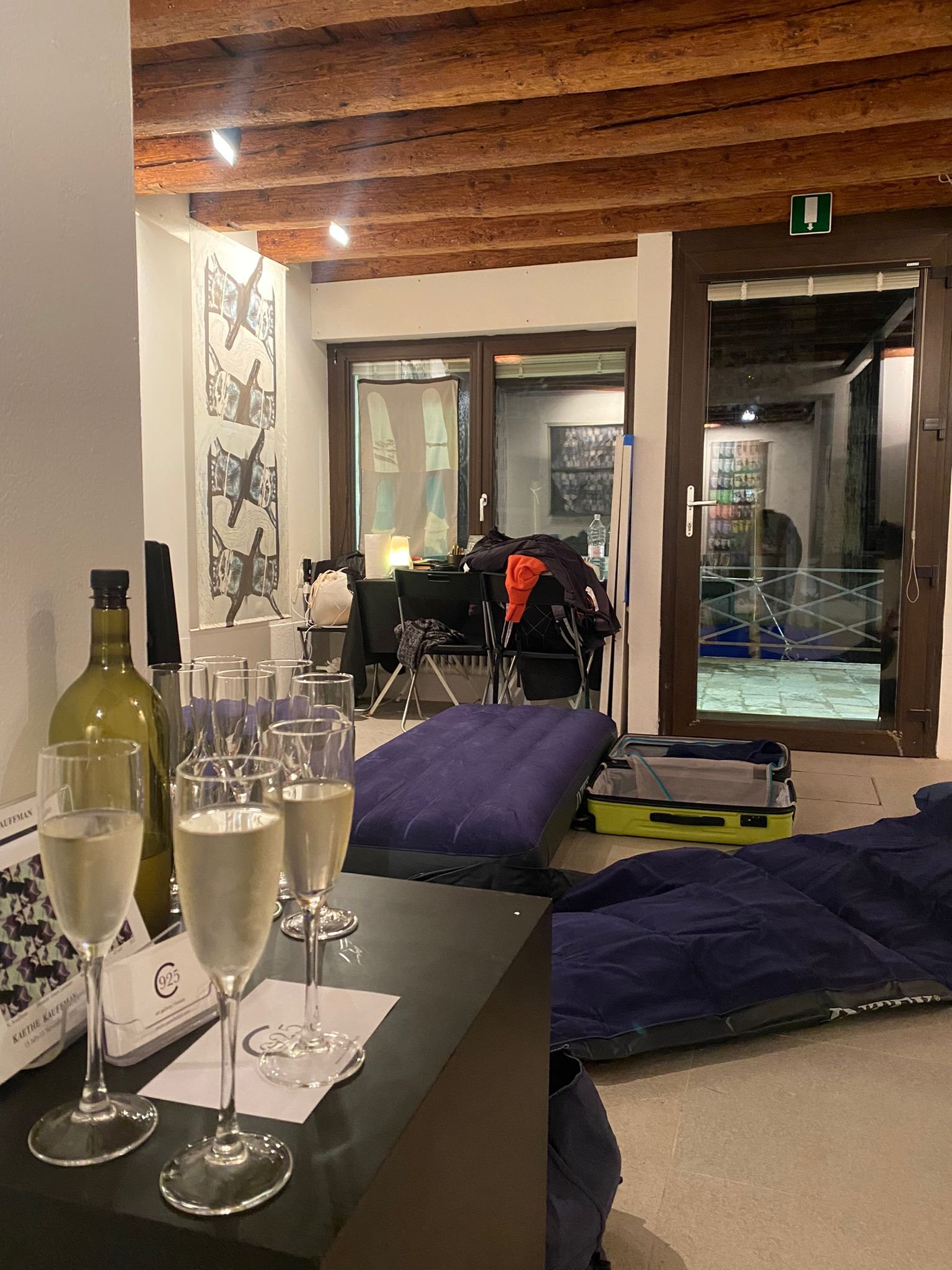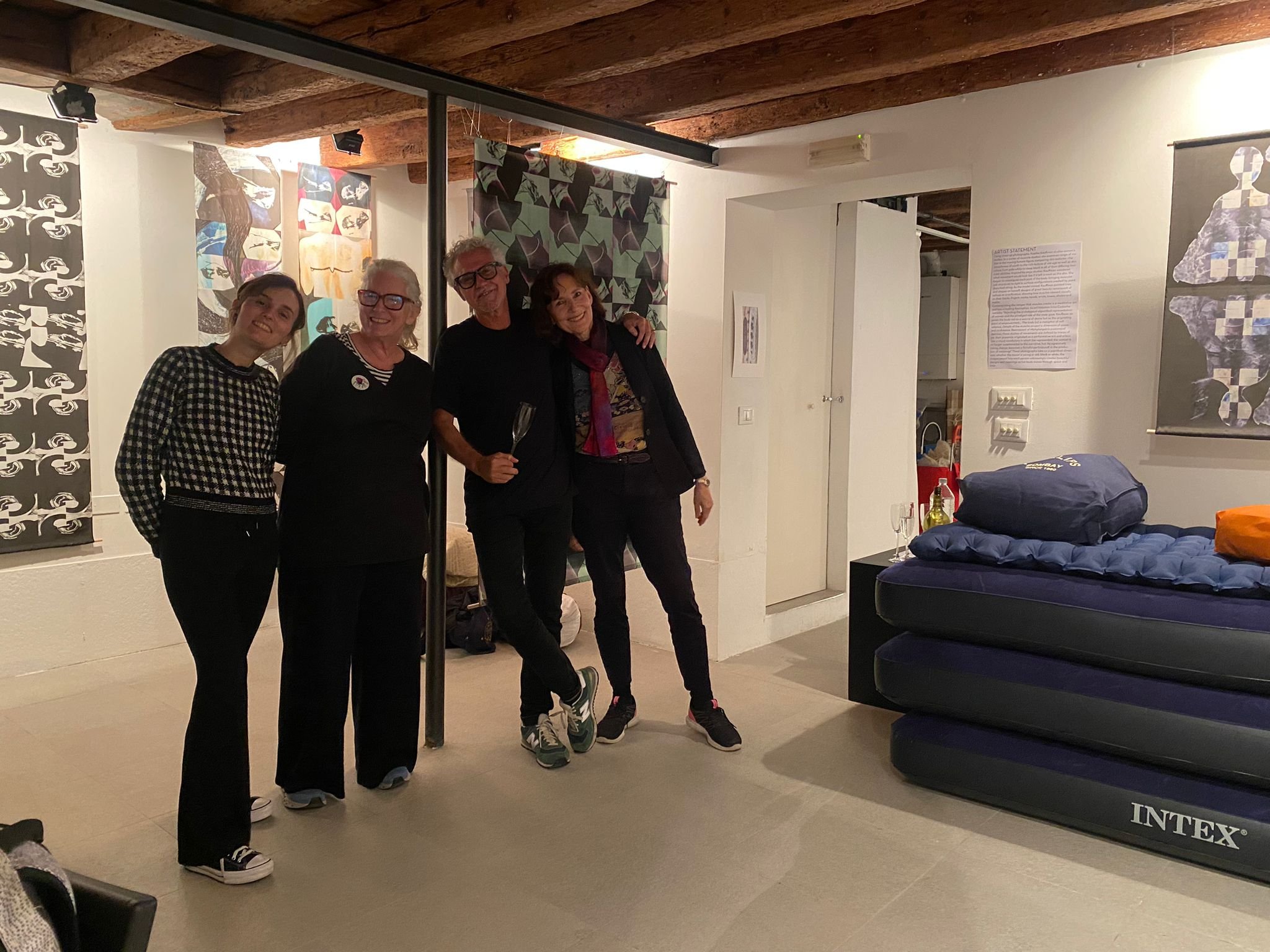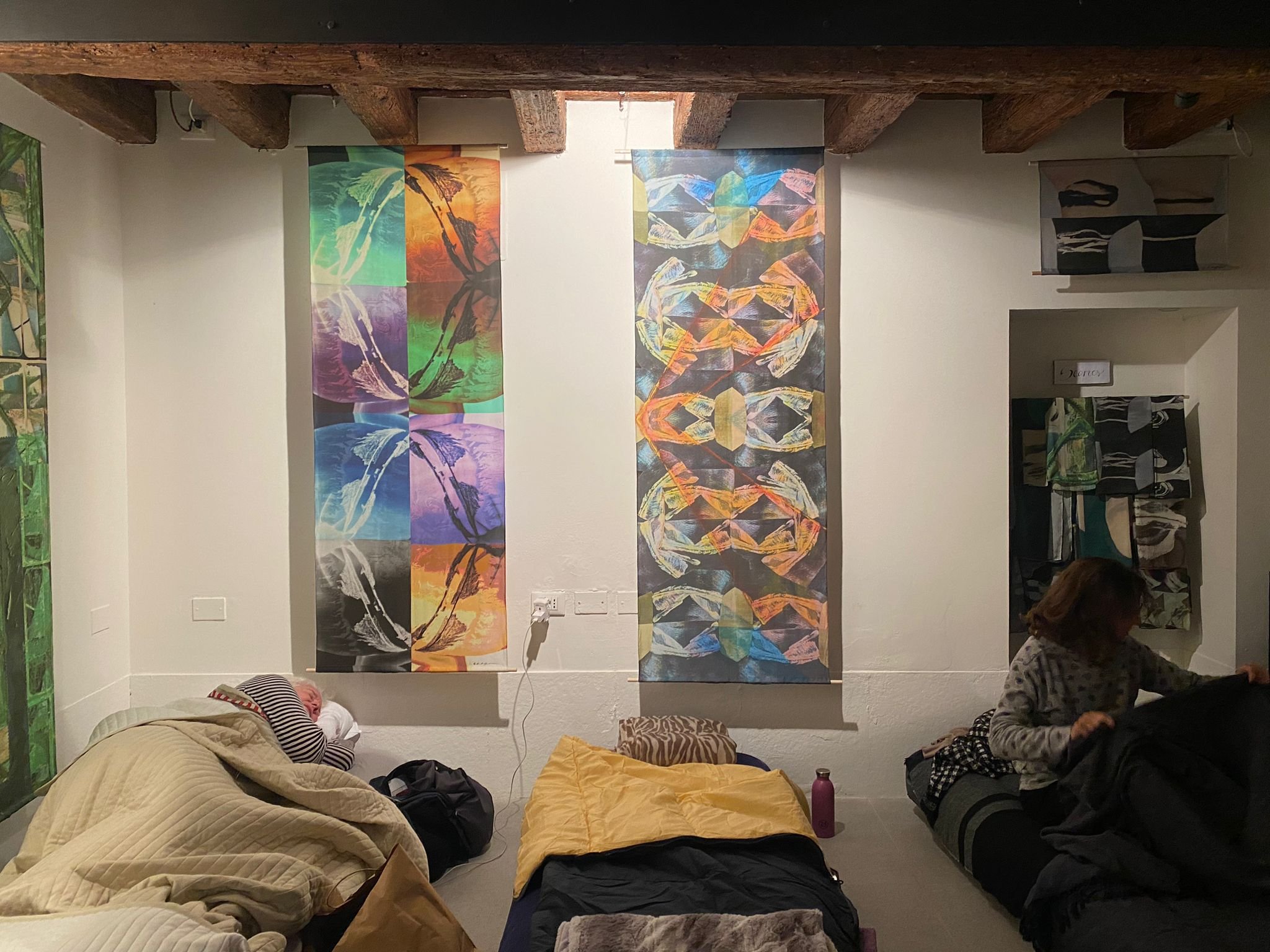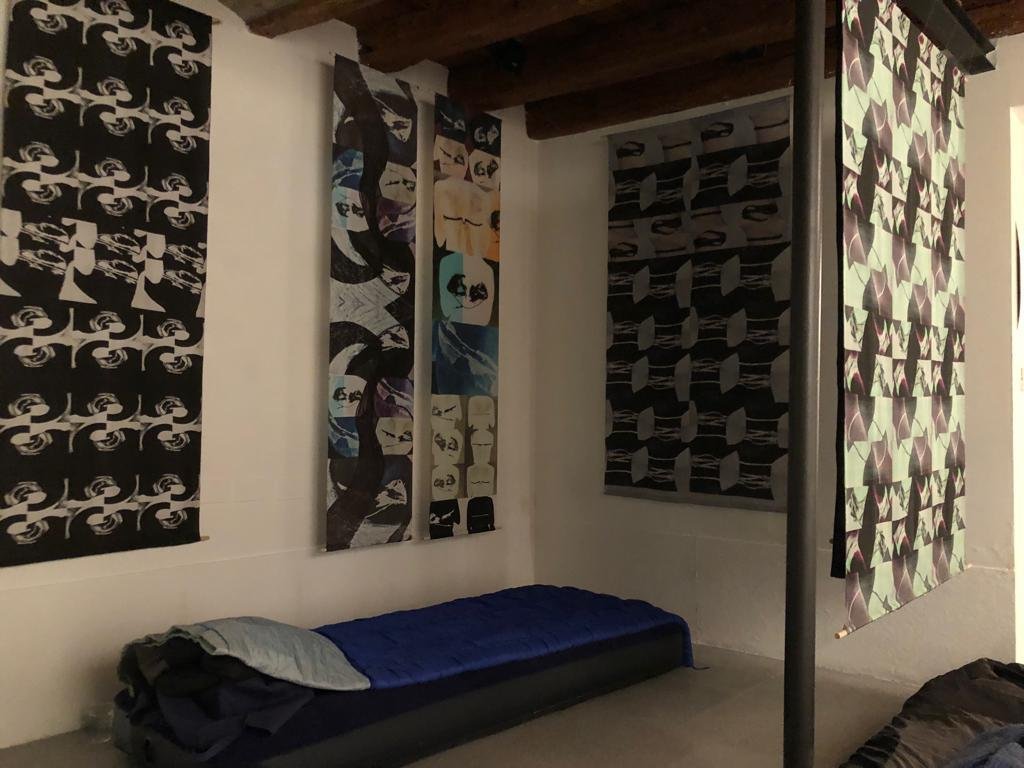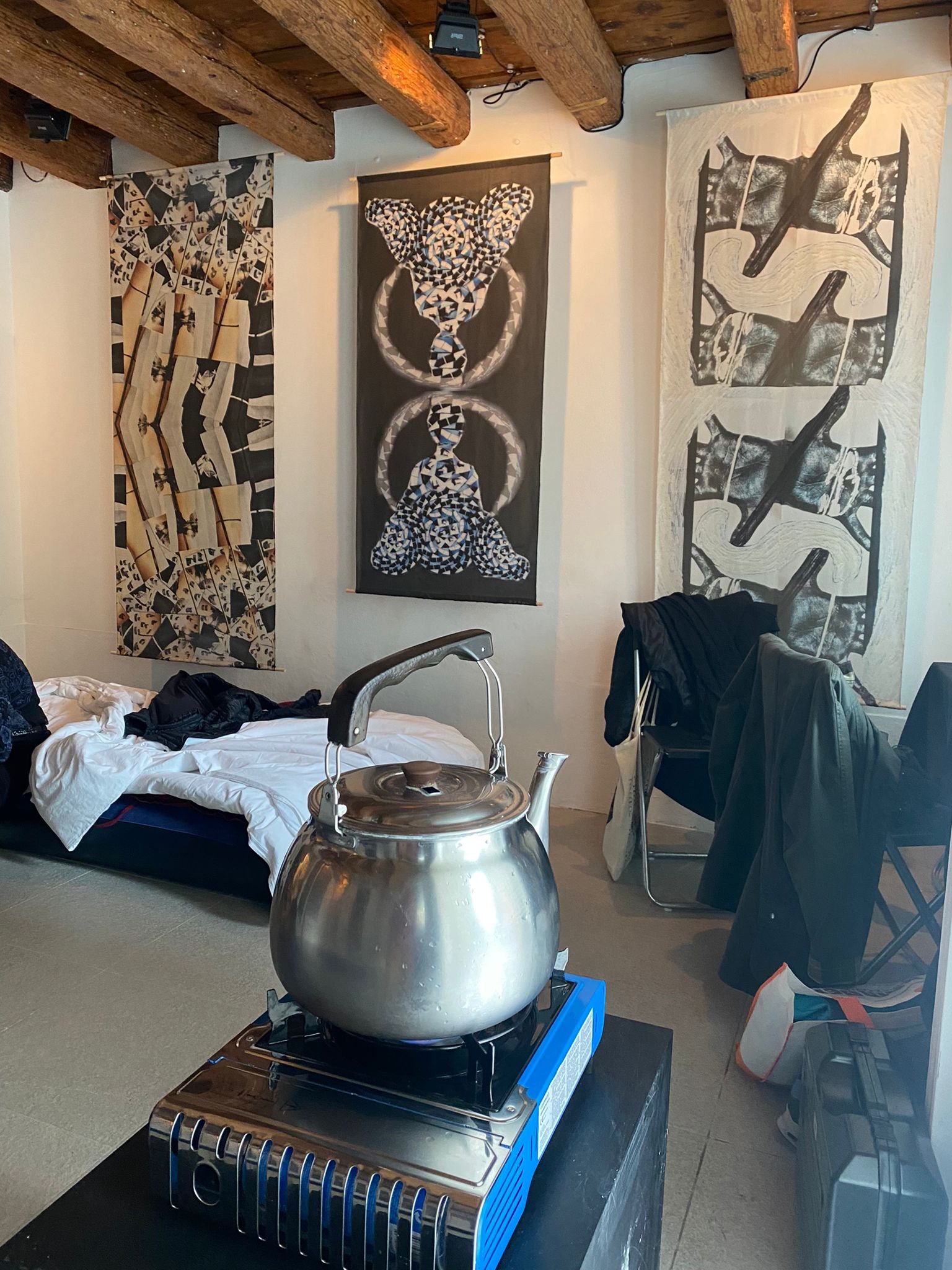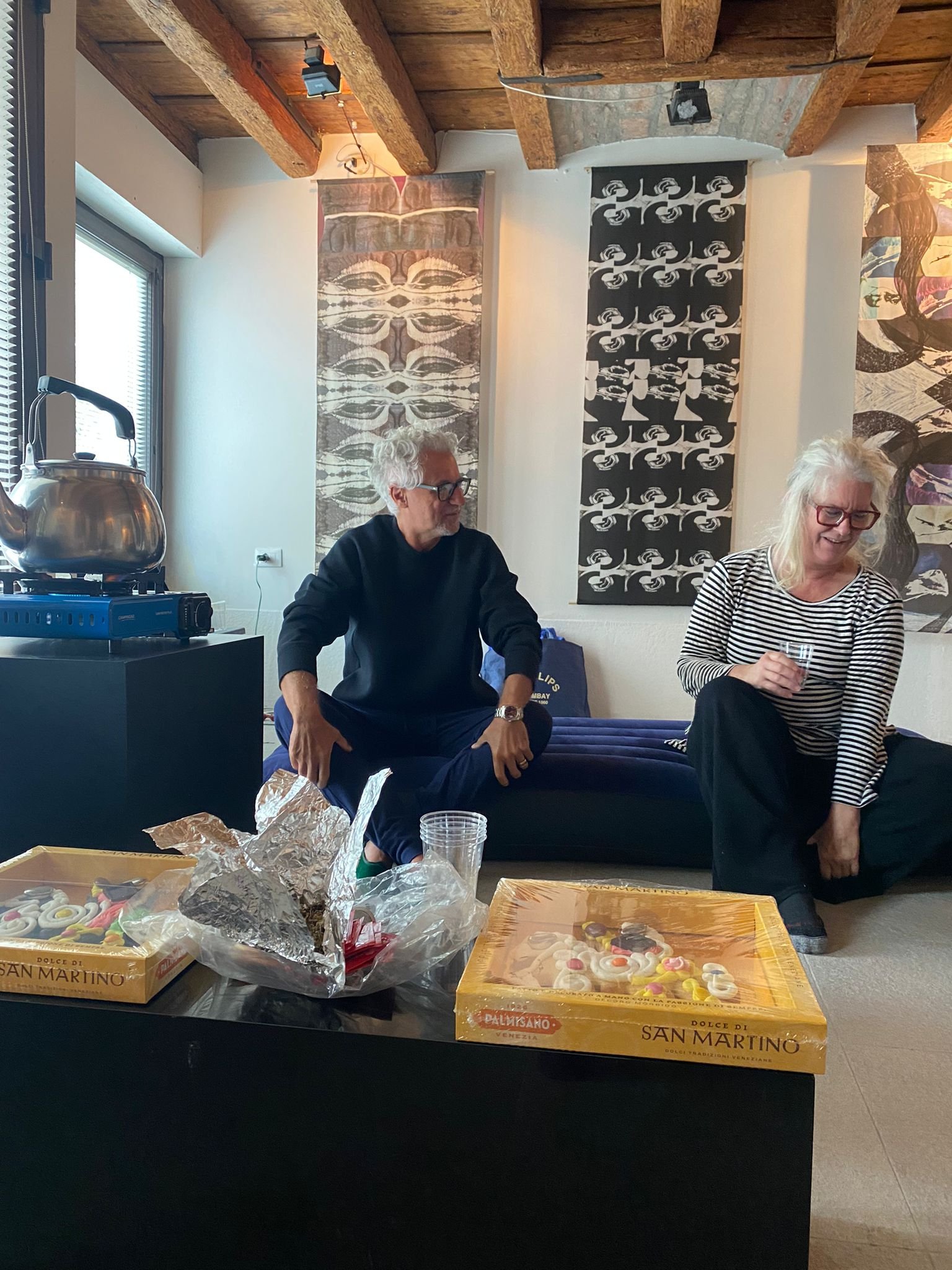Venice and New York 2023
‘Mission Statement’
Protocol of artistic fruition
Luca Caldironi
"Human minds are mirrors of each other, because each reflects the emotions of the other, and because those rays of passion, feeling, and opinion reverberate by gradually and imperceptibly fading away."
(Hume 1739, 2.2.5.21)
"One uses a glass mirror to look at one's face and one uses works of art to look at one's soul."
(George Bernard Shaw)
“Change alone is unchanging”
(Herakleitos)
Scientific research has increasingly shown us how indispensable a trans-disciplinary approach is to better understand and develop knowledge of the human being in its complexity.
Declining this general consideration in the field of art and particularly in the field of artistic enjoyment, the discovery of neuronal plasticity and the system of 'mirror neurons' has led us to a greater and deeper reflection on the neurological basis of the phenomenon of empathy and its psychological correlates.
V. Gallese (2003) reminds us that an observer in front of an image "brings into play not only vision, but also the motor system, the somato-sensory system and the circuits that preside over our ability to feel emotions" and goes on to say that in this process there is the co-participation of multiple senses. This is what he calls the 'multimodal approach to vision.'
The aspect we are interested in exploring has its neuro-physiological basis in the fact that the mirror neuron system is activated, not only with the presence of the sight of 'real actions', but also when these are simply 'mimicked' or 'depicted'. A kind of 'embodiment' would take place through a neural transition of the potential action depicted. In this the artist's ability to represent becomes important.
David Freedberg and Vittorio Gallese propose that the motor gesture by which the artist produced the work solicits the mirror system of the viewer (Cappelletto C., 2009). The signs, the traces, of which the work is composed would be "the visible traces of purpose-oriented movement; they are therefore capable of activating the respective motor area in the brain of the observer." (Freedberg D. and Gallese V., 2007). These two authors thus propose the hypothesis that, by virtue of this mechanism, the observer reacts to a painting or a work of art in general as if he or she were experiencing the action firsthand. This process is what makes these two researchers associate the phenomenon of empathy with that of mirror neurons. This feature extends the neurophysiological discovery to the multiplicity of stimuli, both real and imaginary that surround us.
We are particularly interested in its extension into the field of art, artistic enjoyment and the emotions that are coupled with it.
The digression we shall now attempt to develop sets itself the task of juxtaposing the neural pathway of mirror neurons with the psychodynamic processes that from Freud onward have characterized models of study of art and its fruition. On the other hand, Freud, already from his writing on meta-psychology indirectly pointed out to us how important a certain imaginative speculation was in the study of phenomena that would later find correlations in later scientific discoveries as well.
In Semir Zeki's studies, too, we find confirmation of the functional involvement of areas of the brain and Freedberg and Gallese's hypotheses regarding the perception of 'gesture', of the movement of the 'artist's hand'. But to these, Zeki, also adds the importance that, to these neural pathways, individual 'experiences' can also be associated. Indeed, we know how important these experiences are in the assumption of meaning with respect to the work to which we are exposed.
What has been stated so far is an invitation to integrate neuroscience with psychology and in particular with psychodynamic psychology. Integration that seems to us fundamental in order to broaden the field of observation of aesthetic fruition that cannot be confined only to biology but must also inscribe itself in the field of individual experiences and cultures of reference.
We could therefore say that: we do not only see what we see, but we also see what the experience arouses within us, what we 'feel'. Our representation of 'reality' is always linked to our emotional experience.
Hence the importance of establishing a personal relationship with the work one observes, giving oneself time to do so, time to 'mentalize' the experience. An experience that benefits from being as 'un-saturated' as possible regarding any kind of information about the object being observed.
Graziella Magherini particularly dwelt on the experience of artistic fruition and proposed a 'grid' through which we can deepen our research on it. This experience is based not only on 'constant' mechanisms such as biological and neurophysiological ones but also on 'variable' mechanisms such as those related to ‘early life experiences’, the phenomenon of the 'uncanny' ('Unheimliche') and that of the 'selected fact'.
Let us see, now to better sketch these last three variable mechanisms, because it is precisely on these that Graziella Magherini's aesthetic fruition protocol is based. Regarding the first, it can be framed in the primary 'mother-child' aesthetic experience or encounter with the 'primary' object’. In fact, as Magherini says, "In the moment of the viewer's encounter with the beauty of the artistic object and its appeal, 'the aesthetic object' recalls and re-actualizes the relationship with 'the primary object.'"
This reflection is confirmed by studies of 'infant observation' and other research within the clinic. Traces of this appear evident in numerous works of religious art, where, also through the use of colors and light, traces of the 'sub-lime' are ritualized, both in its meaning of something that 'emerges below the threshold' and of 'un-veiling’.
‘Nature loves to hide’, [Becoming is a secret process]. (Herakleitos, 540 – 480 BC]
With the term 'uncanny', Magherini takes up the Freudian concept of the 'return of the repressed', which, applied to the work of art, tells us how it has "the power to 'evoke' in the viewer ancient and removed, forgotten personal events, that is, the unconscious represented (...). Under certain circumstances, the work of art can also reach places in the mind where very remote emotional experiences of our personal history are reposed, not yet represented, thus recorded but not encoded, not symbolized, which find symbolization in the work of art. Thus there is the bringing into form of an emotional experience that had not yet achieved a symbolic image in the mind: a union takes place between a set of emotions without form, which take form precisely in the moment and thanks to artistic enjoyment."
Following this path gives the possibility of increasing personal growth and utilization of resources, it also gives the possibility of containing and reorganizing 'chaotic material' and 'primal turbulence' of our psyche.
When we talk about the 'selected fact' we start from the reference that W. Bion (1962) borrowing this concept from the thought of mathematician Henri Poincaré. The mathematician meant by this a process through which a single observation offers the possibility "of arriving at a coherent 'configuration' and suddenly introducing order where the appearance of disorder reigns."
W. Bion applies this to the psychoanalytic method and in particular to the way the mind of the analyst and his patient functions during free associations and interpretations.
Magherini, Bion Talamo and others (1995) "have highlighted how the mechanism of 'selected fact' also operates in the process of creation-fruition of the work of art, both as a mental function of the artist and as 'revelation-discovery' at the moment of fruition. At the moment of fruition, in particular, in the complex of elements that make up the work of art, one emerges that at that moment, in that particular person, gives considerable emotional significance to that work and at the same time casts a beam of light on aspects of the person's life by suddenly organizing them in a new way. The specific characteristics of that element, definable precisely as a 'selected fact,' become a powerful mental catalyst."
In light of the considerations we have proposed, there emerges the need to elaborate a protocol centered on aesthetic fruition that can give us guidance on both the psychic elements involved and the evolutionary possibilities derived from this encounter/experience.
In doing so, we have kept in mind the research of Graziella Magherini, the protocol proposed by Alessia Anello and our direct experience, both in the clinic and in its extension into the field of creativity and art.
Aesthetic experience is obviously not limited to the visual field alone, so the protocol also includes applications and adaptations to other sensory involved.
Let us now give prevalence to the visual one as an explanatory track.
Protocol Example:
After asking if the image or art work has been seen/experienced before, we ask: What did you perceive visually (auditory, kinesthetic, olfactory ...) at this moment?
Describe what you see and what you feel. Describe the emotional experience given by this encounter with the art object.
Are there parts of the work (or moments) that you feel most intensely? Are there images that you can most connect to your emotional experiences?
If you use this experience as an 'emotional probe' are there echoes, dreams, fantasies, memories from your life that come back to your mind?
To this protocol we find it useful to add a couple of activities as suggested by Anello.
Subjects are asked to represent with a picture the experience of encountering the work and observe the creative act together.
They are then asked to be willing to make a written account as a narrative of the experience they had.
Interestingly, through these last two activities, 'selected fact' can be the cornerstone of a process that participates in the possibility of reading from two vertices.
One is from encountering the experience to experiencing it, the other from experiencing to creating an aesthetic narrative.
Protocol Objectives:
1)Awareness and increased awareness, not only of the moment of enjoyment of the artistic work, but also of one's own psychological mechanisms and experiences.
2) Enhancement of internal dialogue, with the art object and the environment
3) Awareness essential for personal growth and for developing talents and creative possibilities that were previously difficult to access.
4) Consequent development of further individual and/or group paths.
5) Education to a different form of enjoyment of art that can be extended and involve different 'containers' such as cultural centers, galleries, museums ...
6) Integration and use of multiple skills in approaching the 'complexity' of the artistic phenomenon.
References:
Anello A., (2016), ‘Psicologia dell’Arte e delle Percezione’, Libreria Universitaria, Padova
Bion W., (1962), ‘Learning from Experience, Heinemann, London (ed. It. Apprendere dall’Esperienza, Armando, Roma, 1972)
Cappelletto C., (2009), ‘Neuroestetica. L’arte del cervello’, Laterza, Bari
Freedberg G., Gallese V., (2007), ‘Motion, emotion and empathy in esthetic experience’, Trends in Cognitive Sciences, 11, 197
Gallese V., (2003), ‘The roots of empathy: the shared manifold hypothesis and the neural basis of intersubjectivity’, Psychopathology, 36,171
Herakleitos and Diogenes, Translated by Guy Davenport, Grey Fox Press, 1976
Magherini G., (2007), ‘Mi sono innamorato di una statua’, Oltre la sindrome di Stendhal, ‘I ‘ve Fallen in Love with a Statue’, Beyond the Stendhal Syndrome, Nicomp L.E ed., Firenze
Magherini G., (2010), ‘Psicoanalisi ed esperienza estetica’ Un modello interpretativo, PsicoArt 1 n.0 - 2010
Magherini G., Bion Talamo P., Falci A., (1995), ‘Aesthetic experience as psychotic uncanny and the function of the selected fact’, IPA 39th International Congress, S. Francisco, 30 uly-4 August
Zeki S., (2003), ‘La visione dall’interno’ Bollati Boringhieri, Torino
Aesthetic Reaction: Protocol based on Graziella Magherini's Model.
Luca Caldironi
What did I perceive visually, audibly, kinesthetically?
How was my sensoriality involved?
Was there a predominant mono-sensoriality or did multiple senses articulate together?
Let us now turn to emotional sensoriality: what do I feel on an emotional level?
What emotions are activated?
Can what I feel on an emotional level be associated with an image, music, or movement?
Are there parts of the artwork that I feel emotionally in a more or less intense way?
What Memories, Dreams, Fantasies surface in the mind?
If I use the work as an 'emotional probe' what echoes come from it?






